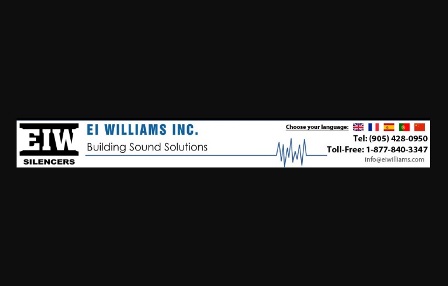Most circuits have noise limits in place to endeavor to hold absolutely everyone pleased. Motorsport exhausts are primarily created for maximum efficiency but normally don’t have adequate silencing to meet increasingly stringent noise levels. Existing noise levels are under, on the other hand these really should be checked as they will be topic to adjust, some classic racers are exempt on some meetings: Get much more information about thermal insulation blankets
Rallying noise levels are 98 dB except stage rallying which is 100db.
Exhaust noise measurement
The definition of your decibel is according to the measurement of power in telephony on the early 20th century in the Bell System within the US. One decibel is one tenth (Deci-) of one bel, named in honour of Alexander Graham Bell. Even so, the bel is seldom used. These days, the decibel is used for a wide wide variety of measurements in science and engineering.
Around the decibel scale, the smallest audible sound (near total silence) is 0 db. A sound 10 instances additional highly effective is 10 dB. A sound 100 occasions additional highly effective than near total silence is 20 dB. A sound 1,000 instances far more potent than near total silence is 30 dB. To place all of that into some context, here are some typical sounds and their decibel ratings:
Whisper – 15 dB
Regular conversation – 60 dB
A petrol lawnmower – 90 dB
A car horn – 110 dB
A rock concert or maybe a jet engine – 120 dB
A gunshot or firework – 140 dB
Distance affects the intensity of sound so in case you are far away, the power is considerably diminished. All of the ratings above are taken near the sound.
Any sound above 85 dB may cause hearing loss, and also the loss is associated both to the power from the sound as well because the length of exposure. Eight hours of 90-dB sound may cause damage to your ears; any exposure to 140-dB sound causes quick damage (and causes actual pain). The usage of ear protection inside the car and the pit lane is hugely advisable.
A sound meter is really a beneficial addition to the race kit, it can enable the vehicles noise level to become checked prior to arriving at the track, and helpful for pitlane use to verify if ear protection is advisable. Care really should be taken to study the guidelines and measure inside the very same manner as used in the track.
Motorsport noise is checked using the following method, measurements will be produced at 0.5m from the end from the exhaust pipe with the microphone at an angle of 45° using the exhaust outlet and at a height of 0.5 to 1.0m above the ground.
Exactly where far more than one exhaust outlet is present, the test is going to be repeated for each exhaust and also the highest reading will be used. In situations exactly where the exhaust outlet just isn’t quickly accessible, the test can be carried out at 2.0m in the centre line in the vehicle at 90° to the centre line of your automobile, with the microphone 1.2m above the ground.
Common exhaust silencing problems
An exhaust system might not give the needed silencing for any or a mixture on the following causes:
Inadequate silencing in the system. A car up to 2 litres might comply with noise regs with one silencer but any bigger engine will generally demand no less than two (or extra in some cases particularly vehicles with two separate systems for instance V6 / V8)
Silencer packing burnt away or deteriorated by way of age (also reduces exhaust flow)
Silencer internals / baffles corroded or missing
Silencer poor good quality and resonating resulting from thin wall building.
System too short for sufficient silencing (mid and rear engine cars).
Poor mounting allow contact with physique or frame.
Selecting an exhaust silencer
Racing and efficiency silencers are predominately the straight by way of or absorption sort. The sound energy is reduced by deadening material (which include fibreglass, ceramic wool, or stainless wools) wrapped about a perforated tube by means of the centre on the silencer. This gives the most effective probable flow with very tiny back pressure. A straight by way of silencer with good packing will flow virtually also a plain pipe from the similar size, and this can decrease as the packing burns away because the gases might be able to flow into the holes left behind. This packing desires to become maintained if repackable or the silencer replaced if sealed.
Road car or some tuner boxes are resonated exactly where the gases pass through chambers in the silencer normally 2 or 3 linked by pipes. This really is a lot more efficient at silencing but not so good for exhaust flow. The other sort is diffuser form exactly where the gases exit about discs at the end of your exhaust. This flows well and may be tuned for various noise levels and flow. They are really quick so terrific where space is at premium which include rear-engine automobiles.






